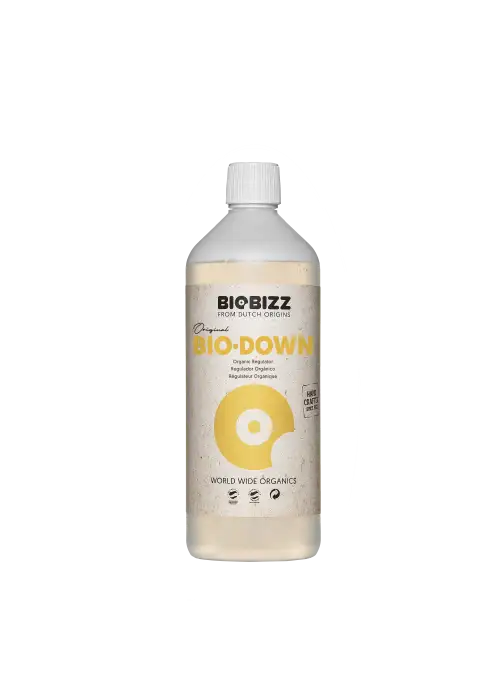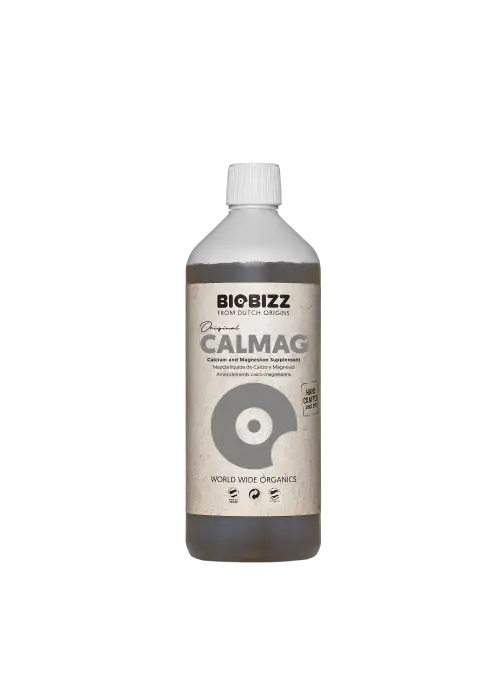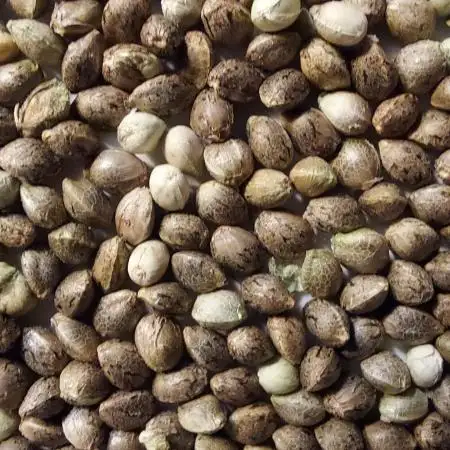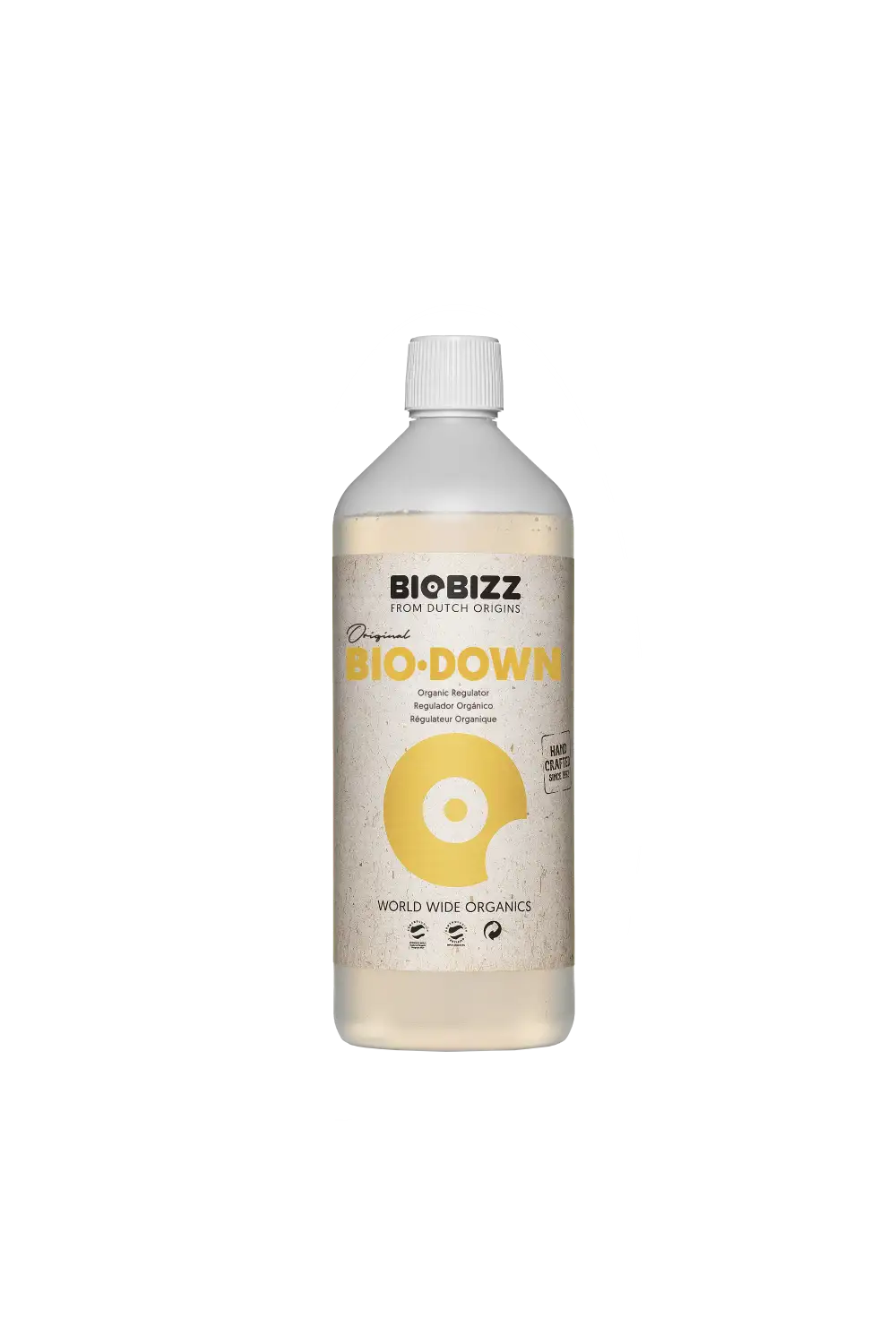The Grow Awards 2026 🏆 





































Gorilla in CoCo

VEG
spiderfarmer Light Emitting Diodes/200W
Custom
Coco Coir
Custom
Perlite
Custom
worm Other
Custom
Indoor
Room Type
LST
weeks 2-7
Defoliation
weeks 4-7
19 liters
Pot Size
3 liters
Watering
Start at Harvest
G
Germination1y ago
Nutrients 2

Bio-Down
0.2 mll

Mycorrhizal Inoculant
1.3 mll
canongun Day 1 - 7
I have 3 different autos (FastBudz Strawberry Gorilla Auto, FastBudz Gorilla Auto, Royal Queen Seeds Gorilla Auto), but will focus on Strawberry in this Diary.
First, I put them into a glass of water for 18 hours, then continued with the paper towel method for 20 hours. In the end, they all spread their tiny roots, indicating they are ready to be put into coco 😊. However, this is my first time with coco, and I haven't been growing for a long time. I once built a fully automated system, which I controlled remotely, and managed to get a adequate yield that made me happy. Anyways, this time I will be able to grow my girls manually...
I have a lot of questions for you fellas who have huge experience compared to mine, especially with coco mix. I will try to provide as much data as I can to facilitate deeper analysis.
2 likes
3 comments
Share
Used method
Paper Towel
Germination Method
Grow Questions
canongunstarted grow question 1y ago
Since I need to give info regarding my question, I am putting my text as a picture because of character limitations. I am sorry for that 😕
Solved
Setup. Strain - Autoflowering
Feeding. Schedule
1 like
00110001001001111Oanswered grow question 1y ago
Further reading: go check out cocoforcannabis.com guides and "dr photon's corner" articles on same site. They suggest a couple different things, but you'll see the same basic principles are at play.
Where you say "NaCl" buildup -- when they say "salts" they mean fertilizer. Unfortunately in coco, there can be Na+ cations.
Ca++ and Mg+ are important at all times and should be provided at "critical levels" of plant available forms around the root -- that means different things for different molecules.
Don't worry about what you were doing before. The basic procedure covers nearly all bases. I'll try to mention exceptions as footnote.
Coco should be mixed with 33% perlite, or similar -- and give or take. 70/30 bagged stuff is fine too. It is nearly impossible to drown the roots with regular volumes of irrigation.
Stop thinking coco is somehow different than any other soilless context. Some are better than others, but coco is 2nd tier compared to sphagnum peat moss (w/50% perlite or similar). Both have similar water per volume capcacity and air penetration if mixed properly with perlite or similar. The only thing special about coco is that if it isn't washed and buffered properly, it may contain high levels of NaCl and leech out Ca++ from your feertilizer whiile releasing any number of cations including Na+, K+ etc-- this is where that urban myth about how it needs more Ca comes from. Unbuffered coco will wreak havoc on your fertilizer formula, which is a big deal for soilless/hydro growing. We provied 100% of all needs through fertilizer and it nees to be at a particular ratio for best results. Sphagnum peat moss needs to be treated too, but it won't kill plants if it isn't (extreme and rare, but possible with shit ass coco batch).
Standard procedure:
Always fertigate (water+nutes) with 10% runoff or more. It should be a well-balanced diet at all times around 1.3-1.5EC (not including tap or other non-nutritious additives). I'll give a rundown of a good starting point below. Simply wait for at least 1/3rd weight loss and repeat. Don't let it sit in its piss. That waste water is fine to use with any plant in dirt outside but i wouldn't give it to potted plants.
The rest is just details. that's the meat above. Pretty simple, eh?
I'd suggest waiting longer between fertigations early on as this will cause greater root mass - when top layer starts to turn is usually 3/4th to a full day before a plant will wilt, so it should cover a workday or a full nights sleep etc if you miss it or on borderline schedule-wise for your attention - obviously avoid wilting, lol. Then, when you get a larger plant or into flower with well-established roots, you can do the more frequent fertigation with potentially greater returns - no less than 1/3rd weight loss from pot should be safe for frequent context and probably waiting for 50-75% loss early on. It may even drink fast enough you can do multiple irrigations per day if you want. That depends on rate of drinking = pot size x plant size. This 2-3x/day fertigation can match growth rates of hydro but you better have it callibrated or you'll just rot your roots.
Your fertilizer should ph-balance to a good spot, but if not, you need to do it. Any acid will work -- almost always have to ph-down between fertilizer makeup and typical tap water being alkaline. Acetic acid, or white distilled vinegar, is as good as any. pH drift occurs because of a poorly buffered solution. Seriously, change products if pH consitency is a problem. 6.0 is a good target. this gives you leeway either direction. you get much lower than 5.8 and it makes Ca difficult to uptake even if present at proper levels.
If you are always working with same volume of water, and pH out of tap is consistent (not always true), it'll require the same mL of acid each time.. take some notes and work it out in a precise manner. The 4-color 0.5pH resolution pH strips are cheap for 100 and easier to deal with than the cheap pH pens. I bouth 100 3-years ago and have 70-80 remaining. My fertilizer pH balances on its own to the proper level regardless of my tap fluctuation because it's pH-buffered to do so. Saves a huge headache.
Exceptions --
Seedlings - early on you should be able to avoid irrigating a very young seedling. Use a humidity dome until it sprouts, then remove the dome. This will keep the substrate moist enough for several days in even a tiny seedling pot. This ensures you got a tap root and more all the way down to bottom by the time you do fertigate. Go for a good wet-dry cycle from then on. Full strength fertilizer 1.3-1.5 EC is fine, but you could give 1/2 that and probably not see any difference. Even 'full' strength is quite mild, to put it in perspective. Light potting soil mixes for young plants probably have higher concentrations by comparison.
Clones - Can't let substrate dry, so you water a bit sooner than with seedlings or early vege. No roots, so it needs moist substrate around the buried portion of stem - don't keep it sopping, but do continue to water with runoff. Stick to water only or a 1/4 or less strength fertilizer - 0.3 EC, or 150ppm compared to 650-750.
Work out something close to these numbers from your fertilizer. There are apps that can calculate this from your guaranteed analysis labels. Simply type the percents in as well as dosage for each product and it will tabulate them for you. "hydro buddy?" think that is the name
https://www.angelfire.com/cantina/fourtwenty/articles/profiles.htm can work, i don't think it's as user-friendly as the phone app. Or, make a spreadsheet - just need a periodic table.
N 120-130 ppm
P 40-60
K 180+
Ca 100+
Mg 75ish
S 100+
Depending on your tap, you may need a slight adjustment with Ca or Mg, even N could have a few ppm in your local water. This is a very light concentration. If it doesn't keep up, raise overall concentration proportionally. This will depend a lot on local variables. I tend to have a high VPD, so i'm closer to the lower level of nutrient concentration needed. Plant may drink faster, but that doesn't increase rate of nute use, so higher vpd requires a llower overall fertilizer concentration, all other factors the same. and vice versa.
E.g. you may need 130ppm Ca. I have quite hard water. I'm sure i'm getting some healthy levels of Ca, though even when i switched from hard water to soft water (not recommended, but seems fine), i didn't have to change my formula.
Drop N down to 110-ish as vege growth ends - 4+ weeks into flower, not when the plant technically goes into flower. Vege growth = new leaves and stem elongation. Just to be clear on timing.
I used this exact formula or some proportionally scaled up version of it in coco for 2.5 years, give or take some experimentation. It works with 99% of plants very well seed-to-harvest and should not see anything by a slow moving tox or deficiency that will be easy to recognise and react to. Simple adjustments like that will be needed. Keep notes till it's ironed out.
this is also the exact, give or take some experimentation spiking p or k, same formula i used in sphagnum peat moss for 2.5 years prior. I'm very much looking forward to working with promix BX or HP topped off with some vermiculite (equivalent to perlite, but adds some Si). their bales come with a nute charge that is strikingly similar, except for lower K. It's ph-balanced and ready to go. No fear of killing plants with Na or some half-assed-buffered batch of coco slowing down your first 30 days of growth.
What you feed the plantis 100% about the plant and not the soilless medium of choice. Coco is fine. It is convenient. It's a bit of a risk, though. It's not "greener" - it wastes a shit-ton of freshwater, i guarantee that is equivalently bad for the future as digging up bogs.
You'll find that numerous different brands have a very similar ratio to the above and at a 1.3-1.5EC mix rate by instructions -- JR Peters "Jack's Hydro part A", Souther ag's hydro line, masterblend's hydro line, athena's proline, floraflex pro line i belive -- all a base hydro paired with calcium nitrate and magnesium sulfate (any old foodgrade epsom salt). It's not an accident. This formula rocks. Don't be afraid of dry nutes. I grow 80sq ft of weed per year and spend 35 USD on fertilizer per year. It should be a tiny portion of the total expense of someone is ripping you off.
1
Week 1. Vegetation1y ago
6 cm
Height
20 hrs
Light Schedule
32 °C
Day Air Temp
6.0
pH
No Smell
Smell
70 %
Air Humidity
0 °C
Solution Temp
27 °C
Night Air Temp
18.93 liters
Pot Size
1 liters
Watering Volume
60 cm
Lamp Distance
Nutrients 5

TriPart Micro
0.5 mll

TriPart Bloom
1 mll

CANNA RHIZOTONIC
4 mll
canongun Day 8 - 14
The tent temperature is high because of the summer. I want to keep the humidity level high, thus I am keeping the tent closed. Should I choose humidity over temperature folks? Or the other way around?
Other than that I am doing Lucas' method. Watering 1L/day, running of the water from the bottom for coco coir.
I have started LST on day 13, little lady looks healthy and strong!
1 like
comments
Share
2
Week 2. Vegetation1y ago
10 cm
Height
20 hrs
Light Schedule
32 °C
Day Air Temp
6.0
pH
Weak
Smell
385 PPM
TDS
55 %
Air Humidity
25 °C
Solution Temp
26 °C
Night Air Temp
18.93 liters
Pot Size
2 liters
Watering Volume
60 cm
Lamp Distance
Nutrients 6

TriPart Micro
0.66 mll

TriPart Grow
0.66 mll

TriPart Bloom
0.26 mll
canongun Day 15 - 21
She is looking fine and green. On day 14, one of the fan leaves' tips were slightly yellow, however it is vanished today. I do not know the reason.
1 like
comments
Share
Used techniques
LST
Technique
3
Week 3. Vegetation1y ago
20 cm
Height
20 hrs
Light Schedule
30 °C
Day Air Temp
6.0
pH
Normal
Smell
385 PPM
TDS
55 %
Air Humidity
25 °C
Solution Temp
26 °C
Night Air Temp
18.93 liters
Pot Size
2 liters
Watering Volume
50 cm
Lamp Distance
Nutrients 6

TriPart Micro
0.66 mll

TriPart Grow
0.66 mll

TriPart Bloom
0.26 mll
canongun Day 22 - 28
She is really eager. The growth rate is noticeable every morning when I have look into the growing tent...
I am keeping the same nutrient rates because, as you can see from the pictures, there are signs of nutrient toxicity. I am giving CalMag and Rhizo as mentioned above, but I have decreased all the TriPart nutrients to half. I will continue watering her this way for the next 2-3 sessions.
I am also confused regarding defoliation. Every session I am cutting some leaves if they are blocking too much light and if I cannot manage to push them down. However, I will wait for the real defoliation session until the early flowering phase. What do you guys think?
4 likes
3 comments
Share
Used techniques
LST
Technique
4
Week 4. Flowering1y ago
20 cm
Height
20 hrs
Light Schedule
30 °C
Day Air Temp
6.0
pH
Normal
Smell
309 PPM
TDS
60 %
Air Humidity
25 °C
Solution Temp
28 °C
Night Air Temp
18.93 liters
Pot Size
2.5 liters
Watering Volume
40 cm
Lamp Distance
Nutrients 6

TriPart Micro
0.53 mll

TriPart Grow
0.26 mll

TriPart Bloom
0.53 mll
canongun Day 28 - 35
I did a bit of defoliation and also bent a bit more branches to provide more light it the lower part. I hope she is happy, the only thing that I know is that she is making me happy every time look at her
3 likes
comments
Share
Used techniques
LST
Technique
Defoliation
Technique
5
Week 5. Flowering1y ago
40 cm
Height
20 hrs
Light Schedule
28 °C
Day Air Temp
6.0
pH
Normal
Smell
309 PPM
TDS
60 %
Air Humidity
25 °C
Solution Temp
28 °C
Night Air Temp
18.93 liters
Pot Size
2.5 liters
Watering Volume
40 cm
Lamp Distance
Nutrients 6

TriPart Micro
0.53 mll

TriPart Grow
0.26 mll

TriPart Bloom
0.53 mll
canongun Day 36 - 42
So fun to see her little flowers!! Everyday they are becoming bigger and noticeable. I am keeping the nutrients same as past week.
I hope she is happy!
3 likes
2 comments
Share
Used techniques
LST
Technique
Defoliation
Technique
6
Week 6. Flowering1y ago
40 cm
Height
20 hrs
Light Schedule
28 °C
Day Air Temp
6.0
pH
Normal
Smell
309 PPM
TDS
60 %
Air Humidity
25 °C
Solution Temp
29 °C
Night Air Temp
18.93 liters
Pot Size
3 liters
Watering Volume
40 cm
Lamp Distance
Nutrients 6

TriPart Micro
0.66 mll

TriPart Grow
0.132 mll

TriPart Bloom
1.321 mll
canongun Day 43 - 49
My beauty has a problem :(. This my first growing with coco and showing my neophyte skills...
Everything was going fine until I realized my lady starting have some potassium issues. So, I increased the fertilizers to provide more potassium. Additionally, I also wanted to check the run-off water. I have never done that because I thought I was doing a good job. After checking the run-off water, I realized that I screwed up :)
I am sharing the data of the irrigation water:
pH: 6.06
EC: 875 mS/cm
And now please look at the run-off water data:
pH: 5.16
EC: 7750 mS/cm
Yes you read it right, and I am sure the EC and pH is literally f****d! So, there is no deficiency on the plant. She is literally drowning and there is huge nutrient lock problem...
Yesterday (28/08/2024), I flushed her with 8L of water and ~6 pH. Today, I watered her with fertilizer like as always, then checked again the run-off water and NOTHING has changed...
So, I will do a couple of more flushing, I hope I will manage to fix the problem but if the situation continues like that, it won't end up nice...
I am open every kind of suggestions fellas.
2 likes
comments
Share
Used techniques
LST
Technique
Defoliation
Technique
7
Week 7. Flowering1y ago
50 cm
Height
20 hrs
Light Schedule
28 °C
Day Air Temp
6.0
pH
Normal
Smell
60 %
Air Humidity
25 °C
Solution Temp
29 °C
Night Air Temp
18.93 liters
Pot Size
3 liters
Watering Volume
30 cm
Lamp Distance
Nutrients 6

TriPart Micro
0.66 mll

TriPart Bloom
1.321 mll

CANNA RHIZOTONIC
1.2 mll
canongun Days 50 - 56
Last week, I had a major lockout issue with my plants, so I’ve started monitoring both the irrigation and runoff water closely. I had to do three rounds of flushing, but after that, my lady started to recover, which was a relief!
Since I'm going on vacation for the next 10 days, I’ve been working on setting up an autonomous irrigation system, which I successfully implemented and built yesterday. It uses three 12V water pumps controller by Arduino Uno via H-Bridge motor drivers, each dedicated to one plant. The system runs from 9 a.m. to 11 p.m., delivering around 250 mL of water per plant per session. This means each plant will get approximately 2.5 liters of water per day.
I’ve mixed all the nutrients in advance. I know the ideal scenario would be to add the fertilizers just before each irrigation session, but unfortunately, that’s not possible. Still, it’s better than nothing. The system has been running smoothly since this morning, and so far, the cycle works fine. I’ll improve it further when I get back from vacation.
To prevent any future lockout issues, I’ve extended the irrigation cycles throughout the day to ensure the coco stays consistently moist.
3 likes
2 comments
Share
Used techniques
LST
Technique
Defoliation
Technique
9
Week 9. Flowering1y ago
60 cm
Height
20 hrs
Light Schedule
25 °C
Day Air Temp
6.0
pH
Normal
Smell
70 %
Air Humidity
25 °C
Solution Temp
20 °C
Night Air Temp
18.93 liters
Pot Size
3 liters
Watering Volume
30 cm
Lamp Distance
Nutrients 5

TriPart Micro
0.66 mll

TriPart Bloom
1.585 mll

Calmag
1.5 mll
canongun Days 64 - 70
I just returned from my vacation, and I'm happy to report that the automated watering system worked flawlessly. Although I'm using water-soluble fertilizers, it seems the CalMag from BioBizz settled in the solution, preventing the plants from absorbing it properly, as we can see in the pictures. Aside from that, everything is going smoothly, and the girls are getting closer to their harvest day!
3 likes
1 comment
Share
10
Week 10. Flowering1y ago
60 cm
Height
20 hrs
Light Schedule
25 °C
Day Air Temp
6.0
pH
Normal
Smell
60 %
Air Humidity
25 °C
Solution Temp
20 °C
Night Air Temp
18.93 liters
Pot Size
3 liters
Watering Volume
30 cm
Lamp Distance
Nutrients 1

FlashClean
3 mll
canongun Days 71 - 77
We are coming to end... I started to flush her, buds look big and the colors are appealing. At the end of this week she will go on her last trip.
2 likes
10 comments
Share
11
Week 11. Harvest1y ago
Happy Harvest Day!

9/10
Rated
Colors and smell is amazing. It was a really strong plant, especially for lock out problems.
Show more
Translate
Spent 65 days
Ger Veg Flo Har
98.94 g
Bud dry weight per plant
1
Plants
0.78 m²
Grow Room size
Easy
Difficulty

Talkative, Giggly, Creative
Positive effects

Paranoia, Dry mouth, Dry eyes
Negative effects

Stress, Insomnia, Anxiety
Medical effects

Berries, Flowery, Herbs
Taste
Height
Day air temperature
Air humidity
PPM
PH
Light schedule
Solution temperature
Night air temperature
Pot size
Lamp distance
canongun Sorry for the delay, I was curing my lady before I try. The color, smell and taste is amazing. I definitely recommend you my fellas. Every human being should taste her once before its too late...
7 likes
2 comments
Share
Equipment Reviews

the end.
Enjoying this diary? Follow for more updates!
Prefer the old Diary view?
Go back to the old Diary view




























































































